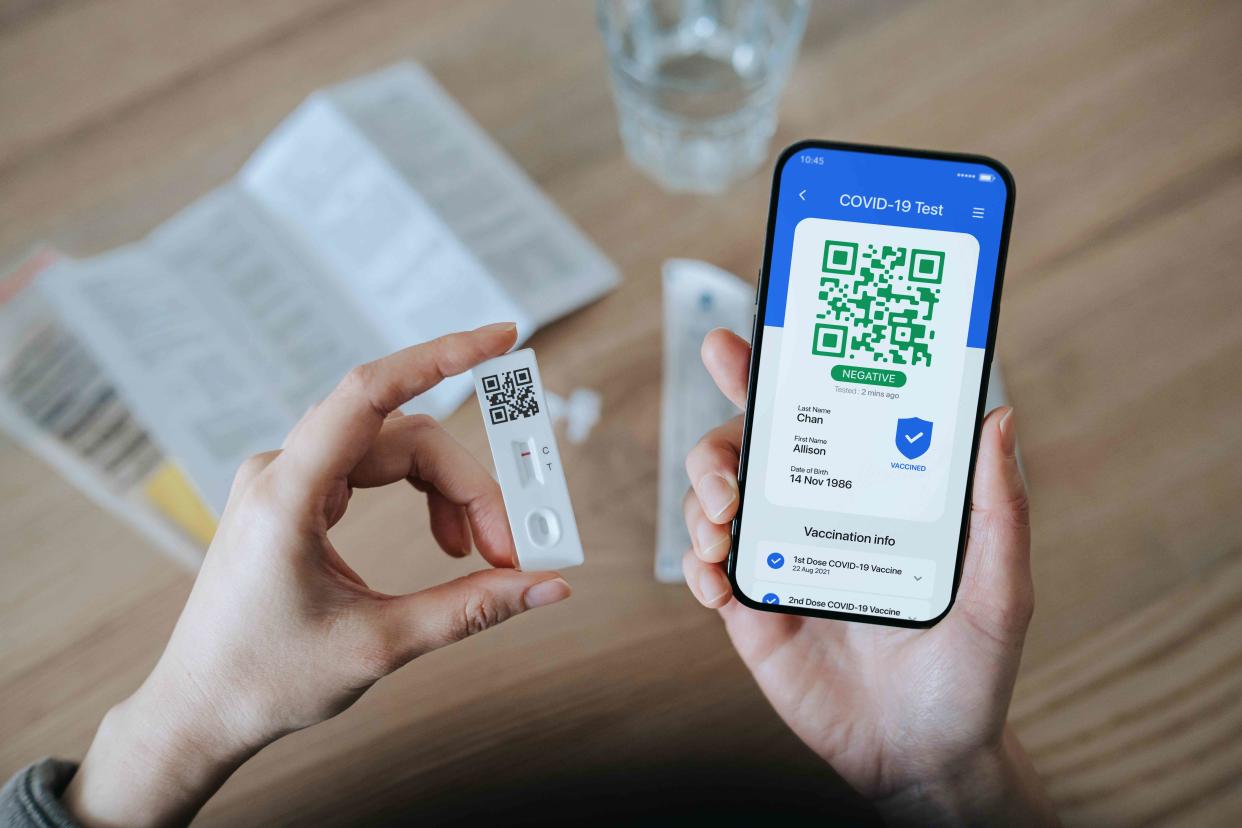How to Round Out Summer Without Getting COVID

d3sign / Getty Images
Fact checked by Nick BlackmerFact checked by Nick Blackmer
Key Takeaways
COVID cases are increasing in most states, with indoor gatherings and new variants contributing to the spread.
Vaccines continue to protect against severe disease, but understanding CDC isolation guidelines is crucial.
Consider getting a COVID vaccine now if at high risk, even though updated vaccines will be available in the fall.
While you might be surprised by the summer COVID wave, infectious disease experts aren’t.
“We’ve had increases in the virus each summer since the pandemic began in 2020,” epidemiologist Katelyn Jetelina, PhD, told Verywell.
The Centers for Disease Control and Prevention (CDC) estimates that COVID cases are currently increasing in 36 states and only decreasing in one.
Among the reasons: More people are getting out of the heat and gathering indoors for air conditioning, where the risk of spread is higher. Plus, COVID is always mutating, making repeat infections more likely even if you’re vaccinated. Newer variants like KP.1, KP.2, and LB.1 each have similar mutations that allow them to both evade immunity and bind more rightly to human cells, making them more transmissible, Andrew Pekosz, PhD, professor of molecular microbiology and immunology at the Johns Hopkins Bloomberg School of Public Health, told Verywell.
Still, COVID vaccines continue to protect many people against severe disease.
Loosened restrictions for people who test positive for COVID may be to blame for the resurgence of cases. In March, the CDC switched from recommending a five-day isolation period to recommending something simpler: People should isolate until they’re fever-free for 24 hours without the aid of medication and until their symptoms start improving.
Robert Hopkins, MD, medical director of the National Foundation for Infectious Diseases, thinks some people are either misinterpreting the CDC guidance or completely ignoring it four and a half years into COVID.
“Many people now have the view of ‘I’m tired of COVID, so it doesn’t exist,’” he said.
Even if you don’t perceive COVID to be a current threat for yourself, it can be a major threat for the older adults or immunocompromised individuals in your life. They’re at a higher risk of severe illness, hospitalization, and death.
With that in mind, infectious disease experts offer the following tips.
Test Yourself If You’ve Been Exposed or Feel Sick
The federal government and local health departments are no longer providing free tests, but testing remains important so that you can seek treatment specifically for COVID if you are older or immunocompromised in order to help avoid severe disease, Hopkins said.
Pharmacies and online stores have COVID tests for as little as $7.50 each and you can use a flexible spending account (FSA) or health savings account (HSA), if you have one, to cover the cost. If you have tests at home that have expired, check this Food and Drug Administration (FDA) web page to see if the expiration date has been extended.
Treat a Positive Case ASAP
If you have a chronic illness, are over 60, or have a compromised immune system, check with your doctor to ask whether you should take Paxlovid, which can help reduce the progression of COVID to severe disease. The drug has to be taken within five days of symptom onset.
Paxlovid can interact with many drugs, so review the medications you are taking with your doctor or pharmacist. If you can’t take Paxlovid, ask about a similar drug with fewer interactions called Lagevrio.
Related: Paxlovid Drug Interactions
Get Ready for Another Vaccine as Soon as August
In June, the CDC recommended that everyone over 6 months of age get an updated vaccine this fall. Those vaccines will target the FLiRT variants, but aren’t expected to be available until late August or early September.
Harish Moorjani, MD, an infectious disease specialist at Phelps Hospital in Sleepy Hollow, NY, recommends that anyone at risk of severe disease talk to their doctor about whether they should be getting a vaccine dose right now, even though it’s not the updated version.
“Someone who is immunocompromised but is going to travel might be advised to get a current vaccine now to reduce their risk of getting COVID,” he told Verywell.
In an email, the CDC confirmed that some groups of people who have not had a recent dose—or any dose—should consider the current COVID vaccine now.
“The 2023–2024 vaccine remains available if you have not yet received a dose or if you have a high risk of getting sick from COVID-19 and are eligible for additional doses,” a spokesperson told Verwyell. “If you are in one of the following groups or are a caregiver for someone who is, consider getting a dose this summer rather than waiting for the 2024–2025 vaccine, which should be available in early fall:
If you haven’t had a COVID-19 vaccine yet.
If you live in a nursing home or long-term care facility.
If you are 65 years and older.
If you have a weakened immune system or have other health conditions such as kidney disease, diabetes, cancer, heart conditions, lung conditions, etc.
If you have young children between 6 months and 4 years old who need their first COVID-19 shot.
If you are pregnant (especially in the last trimester).”
If you do get a COVID shot now, you’ll probably need to wait four months to get another one.
What This Means For You
The rise in COVID cases due to summer indoor gatherings and new variants highlights the importance of staying vigilant. Ensure you follow CDC guidelines, test when necessary, and consider vaccination, especially if you’re at higher risk.
The information in this article is current as of the date listed, which means newer information may be available when you read this. For the most recent updates on COVID-19, visit our coronavirus news page.
Read the original article on Verywell Health.
